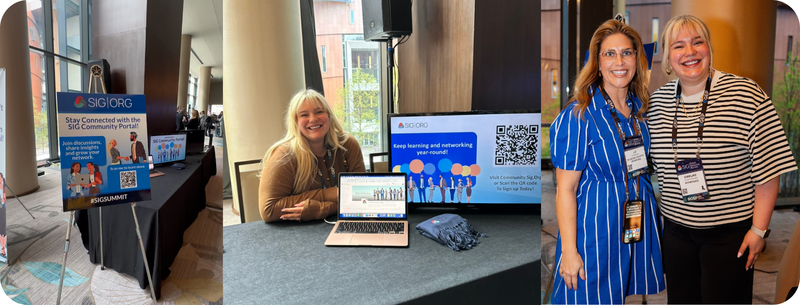In the world of coaching, forming a deep connection with your clients can be the cornerstone of their success and your effectiveness. Building these connections goes beyond merely giving advice or setting goals; it’s about fostering trust, understanding, and a sense of partnership. Let’s dive into why these connections matter and how you can cultivate them effectively.

The Importance of Deep Connections in Coaching
Why Connection Matters
Why is it so crucial to form deep connections with your clients? Simply put, a strong connection can make or break the coaching relationship. When clients feel genuinely understood and supported, they’re more likely to engage fully, trust your guidance, and stay committed to their goals. This emotional bond can be the key to unlocking their potential and achieving significant breakthroughs.
Benefits of Strong Coach-Client Relationships
The benefits of fostering a deep connection are manifold. For one, it creates a safe space for clients to be vulnerable and open about their challenges and aspirations. This trust fosters a more honest and productive dialogue, allowing for more tailored and effective coaching. Additionally, strong relationships can lead to higher client satisfaction and retention, as clients are more likely to continue working with a coach they feel truly connected to.
Building Trust and Rapport
Building trust starts with being an exceptional listener. Active listening goes beyond just hearing words; it’s about truly understanding your client’s message and responding thoughtfully.
Show Genuine Interest
Show your clients that you’re genuinely interested in their lives and goals. Ask open-ended questions and listen without interrupting. This demonstrates that you value their input and are dedicated to understanding their perspective.
Reflect and Clarify
Reflecting back what your client says can help clarify their thoughts and feelings. Summarize their points to confirm understanding, and ask clarifying questions when needed. This shows that you’re engaged and helps ensure you’re both on the same page.
Non-Verbal Cues
Non-verbal communication is just as important as verbal. Maintain eye contact, nod, and use appropriate facial expressions to show that you’re attentive. These cues can help build a sense of connection and trust.
Establishing Empathy
Empathy is the cornerstone of a deep coach-client relationship. It involves not only understanding but also sharing and validating your client’s feelings.
Understanding Client Emotions
Take the time to understand the emotions behind your client’s words. Recognize their struggles and successes, and show that you comprehend their emotional state. This can help build a stronger emotional connection.
Validating Client Feelings
Validation goes hand in hand with empathy. Acknowledge and affirm your client’s feelings without judgment. This reassures them that their emotions are legitimate and important, fostering a deeper sense of trust and support.
By mastering these techniques, you can build a solid foundation of trust and rapport with your clients, setting the stage for a more effective and impactful coaching relationship.
Effective Communication Strategies
Effective communication is vital in coaching. It goes beyond just talking; it’s about creating a dialogue that fosters openness, honesty, and understanding. Here’s how you can master it.
- Clear and Open Dialogue
Honesty is the backbone of any strong coaching relationship. Encourage your clients to be transparent about their thoughts, feelings, and challenges. Create an environment where they feel safe to share without fear of judgment. You can do this by being honest yourself—share your own experiences and insights candidly. When clients see that you’re open and genuine, they’ll be more likely to mirror that behavior.
- Avoiding Assumptions
Making assumptions can be a major barrier to effective communication. Always approach each conversation with an open mind. Instead of assuming you know what your client means or feels, ask clarifying questions. This helps ensure that you’re truly understanding their perspective and prevents miscommunication. Remember, every client is unique, and their experiences and viewpoints are too.
Tailoring Communication Styles
Not all clients communicate in the same way. Some might prefer detailed discussions, while others might favor more concise exchanges. Pay attention to your client’s communication style and adapt accordingly. If a client prefers written communication, incorporate more emails or messages. If they’re more comfortable with face-to-face interaction, prioritize video calls or in-person meetings. By aligning with their preferences, you make them feel more at ease and respected.
Using the Right Tools and Channels
You see, there are numerous tools and channels available for communication. Whether it’s through emails, messaging apps, video calls, or collaborative platforms, choose the ones that best suit your client’s needs and preferences. Some clients might appreciate the immediacy of a messaging app, while others might value the depth that can be achieved in a video call. Be flexible and willing to switch between different tools to maintain effective communication.
Implementing these strategies will help you create a clear, open, and tailored communication environment. This will not only enhance your coaching sessions but also strengthen your overall relationship with your clients.
Setting Boundaries and Expectations
Establishing clear boundaries and expectations is essential for maintaining a productive and professional coaching relationship. It ensures that both coach and client are on the same page and helps prevent misunderstandings.
Defining Roles and Responsibilities
Clear definition of roles and responsibilities helps in creating a structured and efficient coaching environment. As a coach, it’s your duty to guide, support, and challenge your clients. Outline what your responsibilities are, such as providing feedback, creating action plans, and being available for scheduled sessions. Similarly, define what is expected from the client, like being open to feedback, completing assignments, and actively participating in sessions. This clarity helps in setting the right expectations from the start.
Setting Mutual Expectations
Discuss and agree on mutual expectations at the beginning of the coaching relationship. This includes how often you’ll meet, the preferred modes of communication, and the level of commitment required from both sides. Setting these expectations early helps in building a strong foundation and minimizes the chances of future conflicts.
Maintaining Professional Boundaries
Scheduling and Availability
Establish clear boundaries regarding your availability and scheduling. Determine specific times for sessions and communicate your availability for any additional support. This helps in managing your time effectively and ensures that clients know when they can reach out to you. Encourage clients to respect these boundaries to maintain a healthy work-life balance.
Confidentiality Agreements
Confidentiality is a critical aspect of the coaching relationship. Create a confidentiality agreement that outlines how client information will be handled and the measures in place to protect their privacy. This fosters trust and reassures clients that their personal and professional information is safe with you.
Goal Setting and Accountability
Setting clear, achievable goals and holding clients accountable are key components of successful coaching. It helps clients stay focused and motivated throughout their journey.
Involving Clients in the Process
Engage clients in the goal-setting process to ensure that the goals are meaningful and aligned with their personal aspirations. Ask open-ended questions to understand their vision and what they hope to achieve. This collaborative approach increases their commitment and ownership of the goals.
Setting SMART Goals
Utilize the SMART criteria to set Specific, Measurable, Achievable, Relevant, and Time-bound goals. This framework provides a clear roadmap for clients and makes it easier to track progress. For instance, instead of setting a vague goal like “improve leadership skills,” specify it as “complete a leadership training course and lead a team project within six months.”
Regular Progress Check-Ins
Regularly check in with clients to monitor their progress. Celebrate milestones, no matter how small, to boost their motivation and confidence. Recognizing their achievements reinforces their efforts and encourages them to keep pushing forward.
Adjusting Goals as Needed
Be flexible and willing to adjust goals based on the client’s progress and any changing circumstances. Regularly review and refine goals to ensure they remain relevant and achievable. This adaptability helps in maintaining momentum and keeps clients on track towards their objectives.
Providing Constructive Feedback
Constructive feedback is a crucial element in coaching, helping clients understand their progress and areas for improvement. Effective feedback should be timely, specific, balanced, and actionable.
Techniques for Effective Feedback
- Timely and Specific
Deliver feedback as soon as possible after observing the behavior or outcome you want to address. This ensures the feedback is relevant and fresh in the client’s mind. Be specific about what you observed and how it impacts their goals. Instead of saying, “You need to improve your communication,” say, “I noticed during the last meeting, your points were not as clear as they could be. Let’s work on making your presentations more concise and impactful.”
- Balanced and Actionable
Balance your feedback by highlighting both positives and areas for improvement. This helps in keeping the client motivated and receptive. Make sure your feedback is actionable by providing clear steps on how they can improve. For example, “You did a great job leading the team through the brainstorming session, but I noticed some team members were not as engaged. Let’s develop some strategies to involve everyone more effectively.”
- Strengths-Based Feedback
Emphasize your client’s strengths to build their confidence and encourage them to leverage these in other areas. Recognizing strengths can boost their morale and provide a foundation for further growth. For instance, “Your ability to analyze data is excellent and has significantly improved our project outcomes. How can we use this strength to enhance your leadership skills?”
- Encouraging Reflection and Growth
Encourage clients to reflect on their strengths and past successes. This not only reinforces positive behavior but also helps them identify patterns and strategies that work for them. Ask reflective questions like, “What do you think contributed to your success in this project?” or “How can you apply your analytical skills to improve team collaboration?”
- Enhancing Client Engagement
Keeping clients engaged is essential for a successful coaching relationship. An interactive and supportive environment can significantly enhance engagement and participation.
Creating an Interactive Coaching Environment
- Using Interactive Tools
Utilize interactive tools such as online whiteboards, collaborative documents, and project management software to make sessions more engaging. These tools can help visualize progress, brainstorm ideas, and track tasks in real time, making the coaching process more dynamic and engaging.
- Facilitating Client Participation
Encourage clients to actively participate in their coaching journey. Ask open-ended questions, involve them in decision-making, and solicit their input on strategies and plans. This active involvement helps clients feel more invested and engaged in the process.
Building a Supportive Community
- Connecting Clients with Peers
Facilitate connections between clients who share similar goals or challenges. This peer support can provide additional motivation, different perspectives, and a sense of camaraderie. Create opportunities for clients to network and share experiences, such as through online forums or social media groups.
- Organizing Group Sessions and Workshops
Organize group sessions and workshops to foster a sense of community and collective learning. These events can provide valuable insights, facilitate skill-building, and offer a platform for clients to support and learn from each other. Group activities can also break the monotony of one-on-one sessions and add variety to the coaching process.
Adapting to Individual Client Needs
Each client is unique, and tailoring your coaching approach to their specific needs can significantly enhance the effectiveness of your sessions. Flexibility and a willingness to adapt are key to successful coaching.
Personalized Coaching Plans
Start by thoroughly assessing each client’s needs and preferences. Use initial sessions to understand their goals, challenges, and preferred learning styles. Ask detailed questions and use assessment tools to gather information that will help you tailor your coaching approach. This understanding forms the foundation of a personalized coaching plan.
Customizing Coaching Approaches
Based on your assessments, customize your coaching methods to suit each client. This might involve adjusting the intensity of sessions, focusing on specific skills, or incorporating different teaching techniques. Personalization shows clients that you are attentive to their individual needs, increasing their engagement and commitment.
Flexibility and Adaptability
Be open to feedback and ready to adjust your methods accordingly. Regularly check in with clients about what’s working and what isn’t. If a particular strategy isn’t effective, don’t hesitate to modify it. This flexibility ensures that your coaching remains relevant and effective, continuously meeting your client’s evolving needs.
Embracing Continuous Improvement
Adopt a mindset of continuous improvement. Stay updated with the latest coaching techniques and tools, and be willing to incorporate new ideas into your practice. Encourage clients to provide feedback and use it constructively to enhance your coaching strategies. This approach not only benefits your clients but also helps you grow as a coach.
Leveraging Technology in Coaching
Technology can play a pivotal role in enhancing the coaching experience. By utilizing digital tools and maintaining connectivity, you can provide more comprehensive support to your clients.
Utilizing Digital Tools for Connection
- Online Platforms and Apps
Use online coaching platforms and apps to streamline your coaching process. These tools can facilitate scheduling, communication, and resource sharing. Platforms like Zoom, Microsoft Teams, or dedicated coaching apps can enhance the interactive experience, making it easier for clients to access coaching materials and track their progress.
- Virtual Meetings and Communication
Incorporate virtual meetings into your coaching routine to offer flexibility and convenience. Video calls can be as effective as in-person sessions, providing a personal touch while saving time and travel costs. Utilize features like screen sharing to enhance your sessions, making them more interactive and engaging.
Staying Connected Between Sessions
Maintain regular communication between sessions through emails or messaging apps. These check-ins help keep clients accountable and provide ongoing support. A quick message to see how they’re progressing or to offer encouragement can make a significant difference in their motivation and commitment.
Sharing Resources and Updates
Share relevant resources, articles, and updates that can aid your clients in their journey. This could include industry news, educational materials, or inspirational content. Keeping clients informed and providing them with additional tools shows your commitment to their success and keeps them engaged.
Conclusion
To cultivate deeper client connections, coaches must build trust through active listening and empathy, maintain clear communication, set and respect boundaries, and provide personalized, flexible coaching. Utilizing technology and regular feedback are also crucial for maintaining engagement and achieving client goals.




